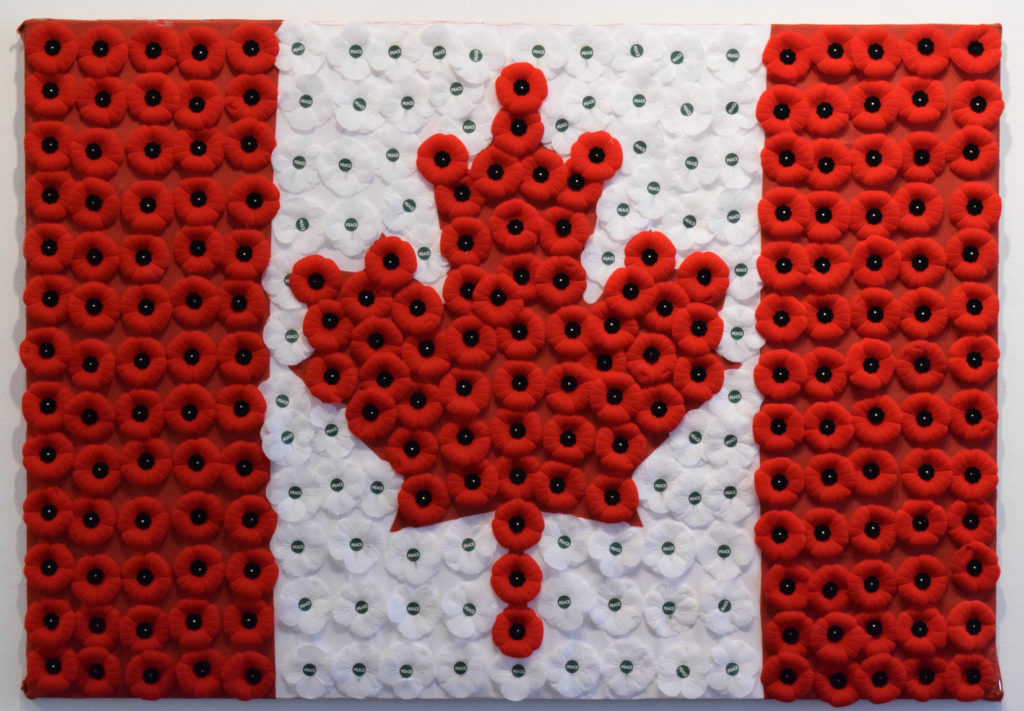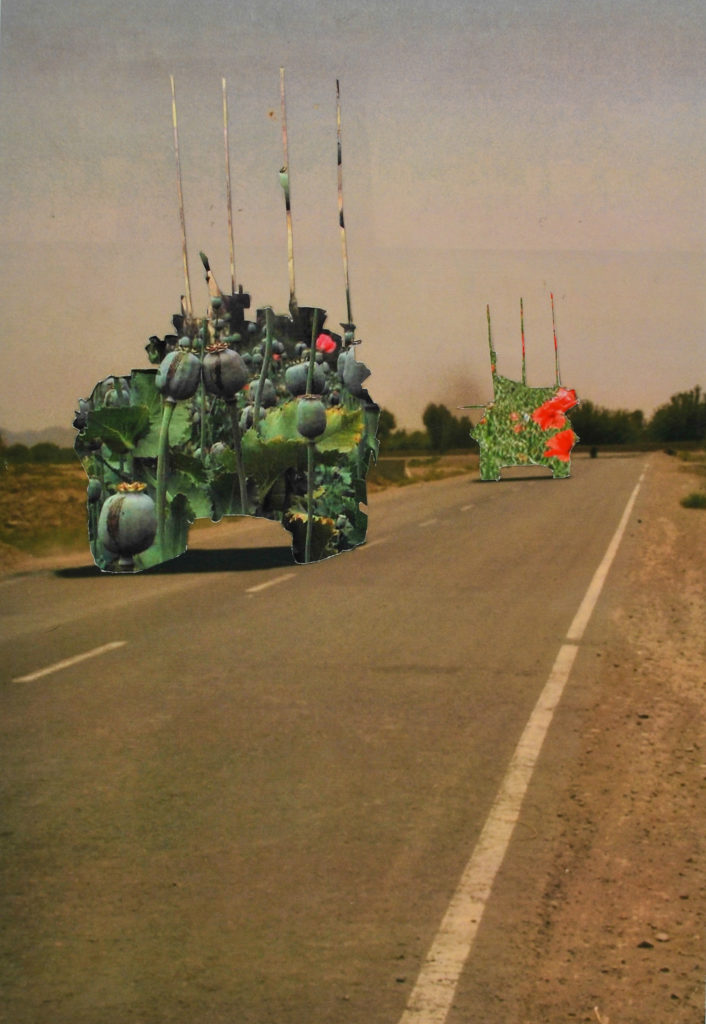Since World War I, red poppies have symbolised the loss of military lives in war. The imagery stems from two poems, “In Flanders Fields,” written by Canadian physician John McRae in 1915 and “We Shall Keep the Faith,” written by American professor Moina Michael in 1918.
Following Michael’s lead, many people still choose to wear a red poppy around Remembrance Day and Memorial Day to commemorate the sacrifice of military personnel in wartime. Many other people, however, choose not to wear a red poppy, believing the message too one-sided to capture the complexities of war.
Maya Eichler, a feminist scholar of militaries and military conflict, and Jessica Lynn Wiebe, a Canadian Armed Forces veteran and artist, aim to open a conversation about the politics of poppies. What does the red poppy mean today? What does the symbol leave out? What might the red poppy mean in other cultures and circumstances?
As the politics of poppies illustrates so well, there is no single story of war. At the same time, there is often resistance to hearing different, and sometimes conflicting, stories about war.
We invite you, readers of Understorey Magazine, to join this conversation.
The images below show art work by both Maya and Jessica. The text provides their own statement about their piece and initial questions to each other.
How would you answer the questions below?
Do you have other questions for Maya or Jessica?
Do you wear a red poppy? Why or why not?
Please add your comments in the “Leave a Reply” box at the end of the article.
“The National Politics of War and Peace”

The National Politics of War and Peace by Maya Eichler
“The National Politics of War and Peace” is a Canadian flag Maya created out of red and white poppies. The white poppy campaign was first initiated by a group of UK women, the Women’s Co-operative Guild, in the 1930s. Its intent is to commemorate all victims of war—not just military but also civilian—and wearing the white poppy symbolises a commitment to working for peace. In Canada and the UK, however, wearing the white poppy can be controversial. The Royal Canadian Legion has spoken out against the white poppy and characterised it as disrespectful of military members and their sacrifices.
Every November, Maya struggles with the politics of poppies and with the divisiveness between those who choose the red or the white flower. She has worn the white poppy, both a white and red poppy, and on occasion a red poppy. In the fall of 2014, the politics of poppies seemed particularly heightened when a Canadian soldier was killed on Parliament Hill. That year, Canadians were called upon to start wearing the red poppy to show respect for soldiers well in advance of Remembrance Day on November 11. At the time, Maya was teaching a class on Canadian Foreign Policy in which there was much discussion of Canada’s shift in emphasis from peacekeeping to combat over the previous decade and a half.
She decided to create “The National Politics of War and Peace” to express both the personal and political tensions that emerge from how people choose to talk about past wars and how people make sense of Canada’s military identity today. She wanted to draw attention to how commemoration is political and shapes current understandings of Canada’s military role in the world. Creating a piece of art seemed like a potentially productive way to engage others in these difficult and sometimes uncomfortable conversations.
Maya: What is your reaction to the flag I made out of red and white poppies?
Jessica: When I first saw your work, I did not understand what the white poppy represented. In the past, I had accepted the interpretation of those around me, with no research, investigation, or questioning on my own. I had perceived the white poppy as a stand against the military and war. It was uncomfortable to confront my own lack of deeper questioning. As a result of engaging with your work, I now understand the history of the white poppy in relation to the broader politics of war.
“Root Funding”

Root Funding by Jessica Lynn Wiebe
In “Root Funding,” Jessica used a photograph she took of two Light Armoured Vehicles (LAVs) rolling past her position in the Kandahar region of Afghanistan. Using collage, she replaced the vehicles with images of poppies. During this time in her art practice (2014), Jessica was beginning to look deeper into the politics of the war in Afghanistan. She noted how the poppy is represented in Canada, for remembrance and sacrifice.
However, as a soldier with the International Security Assistance Force, a NATO-led security mission in Afghanistan, she recognised the poppy as the root funding of the conflict, fuelling the drug industry and the fighting. To her, the poppy in this context represented vulnerability and danger. According to the United Nations Afghanistan Opium Survey, the main profits from the opium trade go to the drug traffickers, warlords, and the insurgency. Therefore, a good spring poppy harvest indicates an intense fighting season.
With this work, Jessica wanted to draw awareness to how the poppy manifested specific meanings in different places and cultural contexts. This work also highlights, if only at a surface level, the political and economic complexities and nature of the war and its perpetuation.
Jessica: What is your reaction to “Root Funding”?
Maya: I really like how you let the piece speak to the uncomfortable truth of the underlying war economy. But when I first saw the piece, I was most struck by its aesthetic beauty and its contrast with my aesthetic image of war. I felt a tension and a lingering discomfort with how you had “beautified” the Light Armoured Vehicles. But that discomfort made me look again, and think again, about the different ways in which we buy into war, whether for economic reasons, ideas of patriotism and sacrifice, or visual appeal—and how entangled they are often with one another.

